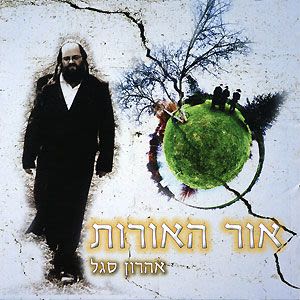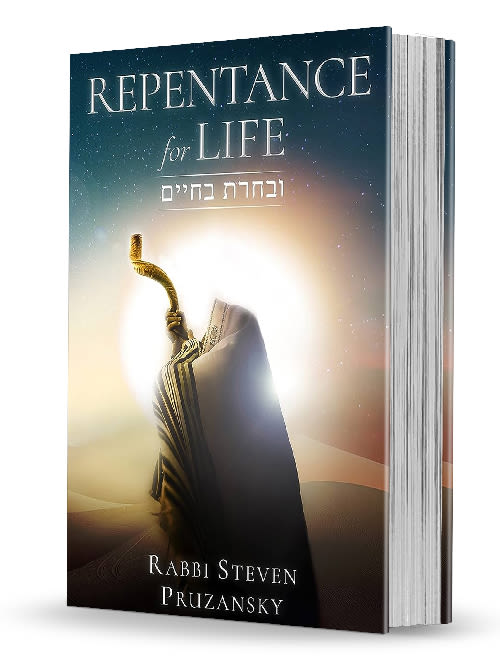
Vayakhel: Picture of My Beloved
Hashem shows how dear the Mishkan (Sanctuary) is to Him by listing every tiny detail in the Torah, and then repeating the entire process of its building...

Question: How many pictures can a grandmother show of her grandchildren?
Answer: How much time do you have?
When Hashem decided to show how dear the Sanctuary was to Him, one of the ways this was accomplished was by repeating the entire process of its building. The centrality of making a resting place for the Divine Presence is so important that the Torah retaught us the story of the Sanctuary’s construction numerous times. Like the loving grandmother, Hashem lovingly reiterates the process of finding a “home” where He and the Jewish people can meet.
Even though on a superficial level there seems to be a lot of repetition in this and next week’s Torah reading,  there are some subtle points which deserve our attention. Hopefully, behind these subtleties we will find some key insights into this Parsha.
there are some subtle points which deserve our attention. Hopefully, behind these subtleties we will find some key insights into this Parsha.
Two commandments which reoccur throughout the second half of the book of Exodus are the requirements to build a Sanctuary and to keep the Sabbath. The first time these two mitzvot (commandments) are mention, building the Sanctuary precedes the obligation of Shabbat. However in these week’s Parsha, the order is reversed. What is the significance of this change? Also, what is the significance of mentioning the mitzvah of Shabbat in proximity to the Sanctuary? There are halachic (legal) answers to this question but the laws that are derived seemingly could have been derived in another manner. There must be some underlying connection between these two commandments.Finally why is there so much repetition concerning the Sanctuary? Apparently, the story could have been repeated, but with greater brevity.
Let us try to gain some insights based on the ideas of Rabbi Yitzchak Hutner (1906-80), one of the great leaders and thinkers of American Jewry of the last generation.
When Moses prayed for forgiveness after the making of the Calf, Hashem taught him a certain prayer, referred to as the Thirteen Attributes of Divine Mercy. The wording of the prayer consists of different names and attributes of Hashem through which the Jewish people would merit Divine forgiveness. (Parenthetically, the Thirteen Attributes have been incorporated into much of our present day liturgy.) The first two names of Hashem mentioned in the prayer are known as the Tetragrammaton, which represents Hashem’s attribute of mercy. The necessity to double the exact same name begs explanation. Our Sages teach us that the first mention of this name refers to the mercy Hashem shows before a sin is performed, while the second refers to His mercy after the sin. Rabbi Hutner taught that this world is sustained by this special Divine name and its repetition contains an essential message for us.
When Hashem created the world, Adam had not yet eaten from the fruit. The first name of Hashem represents a creation that was supposed to continue in this idyllic state. After eating of the fruit, Adam forfeited his existence in that pure and pristine world. He needed a new reality that would afford him the opportunity to regain his position in “the Garden”. However, this new “creation”, which looked the same as the old, was entirely different in its spiritual makeup. This new world is represented by the second name of the Tetragrammaton, showing that there was a second creation which produced an environment for first man to work his way back.
This idea can be carried over to the two commandments to build a Temple. According to many commentators, the first command was before the Golden Calf. That Temple would reflect a sublime reality and closeness to the Creator. Tragically, we fell and we fell hard. Hashem, in His great kindness, reintroduced the mitzvah of a Temple. However, this time its spiritual composition would include all those experiences that were essential for rectifying the transgression of the Golden Calf, the falling, the repentance, and the Divine forgiveness. In a certain way, this “new” Sanctuary represented even a higher spiritual level. The Sages teach us that in the place of a Ba’al Teshuva (someone who transgressed and cleansed himself of those shortcomings) even a fully righteous person can not stand. That was the glory of this “second” Sanctuary.
On a basic level there seems to be a tremendous amount of repetition, but, in truth, there are two descriptions of two similar yet distinct Sanctuaries, one before the Golden Calf and one after. This change is also reflected in connection to Shabbat. Before the Calf, Shabbat is mentioned after the building of the Sanctuary since the primary source of bringing sanctity to the world was through the actions of the Jewish people. On this higher plane, Shabbat was, so to speak, secondary to the labor that the Jewish people put into the elevation of the physical through their work building the Sanctuary. After the Calf, when we had fallen from our spiritual plateau, we needed to turn to Shabbat as the source for bringing holiness into this world. Although our determination to correct our previous mistakes was great, but the reality was we were in a new world, a world of fixing, of tikun olam. In that second world we needed (and still need) to gain our spiritual strength from Shabbat. Only afterwards could we attempt to invest that energy into the Sanctuary as an expression of drawing down the sanctity of Shabbat into this world.
The pictures of the grandchildren are heartwarming, but they usually don’t tell the whole picture of the internal dynamics of the family. The simple reading of the verses of the Torah provides a certain picture of events. Without an understanding of the inner dynamics of our people we might not fully appreciate our past challenges and triumphs, especially with the Golden Calf. There are still a few essential pictures missing from the album of our history. One is the Third Temple and the other is the Mashiach. May these last pictures usher in the period when we will see Hashem rest His Divine Presence in Jerusalem, speedily in our days.










Tell us what you think!
Thank you for your comment!
It will be published after approval by the Editor.